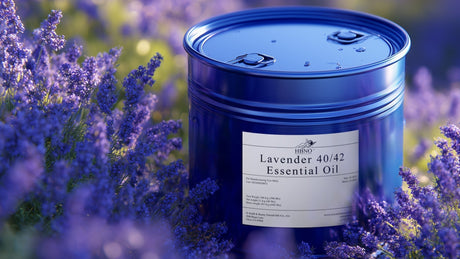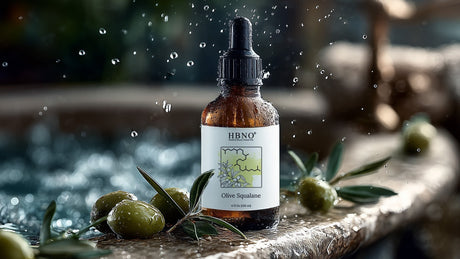Neem oil, derived from the seeds of the neem tree (Azadirachta indica), is a natural, eco-friendly solution to many gardening challenges. Known for its insecticidal, fungicidal, and antimicrobial properties, neem oil has been a staple in traditional and modern Organic Gardening for centuries. When used correctly, Neem Carrier Oil Virgin Organic can become a powerful ally in maintaining healthy vegetable plants, controlling pests, and preventing fungal diseases. This guide provides a comprehensive look into how to use, mix, and apply neem oil on vegetable plants, and why it should be part of every gardener's toolkit.
What is Neem Oil?
Neem oil is an all-natural extract derived from the seeds of the neem tree, which is native to India and other parts of South Asia. The oil is a rich source of various active compounds, including azadirachtin, nimbin, and salannin, which are responsible for its potent insecticidal and antifungal properties. Neem oil is often referred to as a broad-spectrum pesticide, capable of targeting a wide variety of pests while being safe for humans, pets, and beneficial insects when used properly.
In addition to being a pest control agent, neem oil is also used in many homeopathic remedies and cosmetic products for its moisturizing and anti-inflammatory properties. For gardening, specifically vegetable plants, its usefulness as a pesticide and fungicide makes it one of the most valuable organic products available. For best results, use a high-quality Neem Carrier Oil Virgin Organic, which retains the full potency of the neem tree's beneficial compounds.
Why Neem Oil is Perfect for Vegetable Plants
Neem oil works by targeting pests and diseases in several ways. It doesn't simply kill pests outright, but interferes with their ability to feed, reproduce, or grow. This makes it an effective treatment for a variety of garden problems, especially when other chemical pesticides might harm the environment or beneficial organisms.
- Natural Pest Control: Neem oil repels and controls a broad spectrum of garden pests such as aphids, whiteflies, mealybugs, spider mites, and caterpillars. It works as an antifeedant, meaning it prevents pests from feeding on the plants. The active compounds in neem oil also disrupt the development of pest larvae, preventing them from maturing into adults that would continue to damage the plants.
- Fungicidal Properties: Neem oil has antifungal properties that help manage fungal diseases like powdery mildew, black spot, and rust. The oil works by preventing fungal spores from germinating, stopping them from spreading throughout the garden.
- Soil Health: In addition to controlling pests and diseases above the soil, neem oil also improves soil health. It promotes the growth of beneficial microorganisms and deters harmful ones. By improving soil conditions, neem oil contributes to stronger, more resilient vegetable plants.
- Safe for Beneficial Insects: One of the primary benefits of using neem oil in vegetable gardens is that it is relatively safe for pollinators like bees and butterflies, as well as beneficial insects such as ladybugs. However, to maximize safety, it's always best to apply neem oil early in the morning or late in the afternoon when pollinators are less active.
- Eco-Friendly and Non-Toxic: Unlike many chemical pesticides, neem oil is non-toxic to humans, pets, and wildlife when used as directed. It is biodegradable and doesn't accumulate in the environment, making it a perfect choice for organic gardening.
How Neem Oil Works on Pests and Plants
Neem oil is a systemic insecticide, which means it works both on contact and internally. The active compound azadirachtin interferes with the pest's hormonal system, disrupting its ability to grow and reproduce. Additionally, the oil has a strong odor that repels insects and encourages them to leave the treated plant. When applied directly to pests, neem oil can kill them by suffocating them or interfering with their digestive system, ultimately causing them to starve.
Neem oil is also effective at controlling fungi. Its antifungal properties inhibit the germination of fungal spores, preventing the spread of diseases like powdery mildew and rust. The oil creates a protective layer on the plant that helps to prevent infections from taking hold.
The Importance of Using Virgin Organic Neem Carrier Oil
When selecting neem oil for use in your vegetable garden, it's essential to choose the highest quality product available. Virgin Organic Neem Carrier Oil is cold-pressed and unrefined, meaning it retains the full range of nutrients and beneficial compounds present in the neem tree's seeds. Cold-pressing ensures that the oil's chemical structure remains intact, giving you a more potent, effective product.
The "Virgin Organic" designation indicates that the oil is free from synthetic chemicals, pesticides, or additives. This purity is essential for ensuring the safety and health of your plants and the surrounding environment. Additionally, organic neem oil is better for maintaining sustainable gardening practices and contributing to the overall health of the soil.
How to Mix Neem Oil for Application
To get the most out of neem oil, it's crucial to mix it correctly. Undiluted neem oil is too strong to apply directly to your plants and could harm them. Below are a few basic recipes for mixing neem oil for both pest control and fungal treatment.
Basic Neem Oil Spray
For general pest control and fungicide treatment, a neem oil spray is one of the most effective ways to apply neem oil to your vegetable plants.
Ingredients:
- 1 teaspoon of Virgin Organic Neem Carrier Oil
- 1 liter of warm, unchlorinated water
- 1 teaspoon of mild liquid dish soap (acts as an emulsifier)
Instructions:
- Add the neem oil to the warm water.
- Stir in the dish soap. The soap helps to break down the oil and allows it to mix with the water instead of floating on top.
- Stir the mixture thoroughly until it emulsifies completely.
- Pour the solution into a spray bottle.
- Shake well before each use to ensure the oil is well-mixed with the water.
Note: Always use unchlorinated water, as chlorine can degrade the effectiveness of neem oil.
Neem Oil Soil Drench
A soil drench is useful for treating root pests and diseases that affect the soil, such as nematodes, root rot, or damping-off fungi. It allows the neem oil to be absorbed by the plant's root system, where it can act more effectively against soil-borne pathogens.
Ingredients:
- 1 tablespoon of Virgin Organic Neem Carrier Oil
- 1 gallon of water
Instructions:
- Mix the neem oil with the water until fully emulsified.
- Pour the mixture around the base of your plants, ensuring that the soil is well-moistened.
- For larger plants, you may need to apply more solution to ensure complete coverage.
Note: Soil drenches are particularly effective for root pests and soil-borne diseases.

How to Apply Neem Oil
Foliar Spray Application
- Timing: Apply neem oil during the early morning or late afternoon to avoid the hottest parts of the day, which could cause leaf burn. This also ensures that the oil will stay on the leaves for a longer time without evaporating too quickly.
- Application: Use a spray bottle or garden sprayer to apply the neem oil mixture. Focus on thoroughly spraying the undersides of the leaves, where many pests like aphids, spider mites, and mealybugs tend to congregate. Be sure to coat the entire plant, including the stems and top of the soil, as pests can be found in all areas of the plant.
- Frequency: Apply neem oil every 7 to 14 days as a preventative measure, or more frequently if pest or disease problems are particularly severe.
Soil Drench Application
- Timing: Soil drenches are best applied early in the morning or late in the evening to prevent rapid evaporation.
- Application: Pour the diluted neem oil mixture around the base of the plant, ensuring that the soil is well-moistened but not waterlogged. This allows the neem oil to be absorbed into the roots, where it will begin to work against soil-borne pests and fungi.
- Frequency: Apply soil drenches once every 3 to 4 weeks, or as needed based on pest and disease pressures.

Safety Considerations When Using Neem Oil
- Wear Protective Gear: While neem oil is non-toxic to humans and animals, it's always a good idea to wear gloves and protective eyewear when mixing and applying the oil to avoid skin irritation or eye contact.
- Avoid Applying During Rain: Neem oil needs time to work on the plant, so it is important not to apply it before rainfall, as this could wash the treatment off before it has a chance to take effect.
- Avoid Overuse: Overapplying neem oil can lead to a buildup in the soil or on plant surfaces. Always follow the recommended application instructions and avoid excessive use.
Conclusion
Neem oil, particularly Organic Virgin Neem Carrier Oil, is a powerful and natural solution for controlling pests, diseases, and promoting overall plant health in your vegetable garden. With its potent insecticidal, fungicidal, and soil-enhancing properties, neem oil provides a holistic approach to organic gardening that is safe for humans, pets, and beneficial insects. By understanding how to properly mix, apply, and use neem oil, gardeners can ensure healthier, more productive vegetable plants while protecting the environment.
If you're looking for a reliable and sustainable way to control pests and diseases in your garden, make Organic Virgin Neem Carrier Oil a staple in your gardening routine. Not only will your vegetables thrive, but you'll be contributing to the overall health of your garden ecosystem. Grow your business with a Private Label Business Partner providing bulk, retail-ready, and customizable products.



